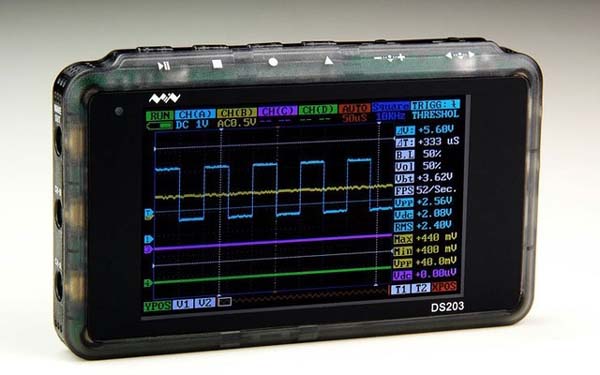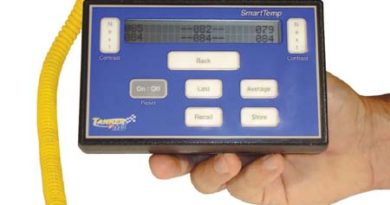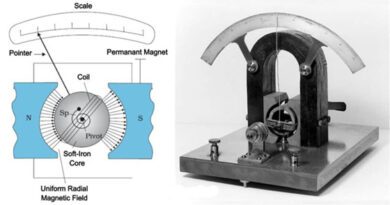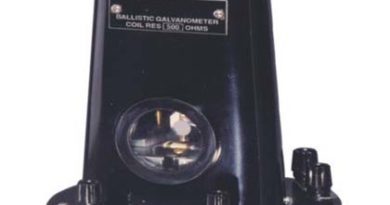OSCILLOGRAPHS
Oscillographs are used for the observation and measurement of transient responses, as well as for the determination of alternating current and voltage waveforms. Oscillographs are of the following types.
(1) Electromagnetic oscillographs
(2) Electrostatic oscillographs
(3) Cathode ray oscillographs
In all type of oscillographs there is a moving system which is caused to deflect when the current or voltage under test is applied to the instrument and also an optional system for the indication or recording of the wave.
Electromagnetic Oscillographs
There arc two types of electromagnetic oscillographs
(i) Moving-magnet type made by Blondel
(ii) Moving-coil type made by Duddell
Duddell oscillograph has low inductance and is free from hystersis errors. Its principle construction and working is as described below:
Principle
When a loop of wire is placed between the poles of a permanent magnet and current is passed through it, two forces act on the sides of the loop in opposite direction and it starts rotating. This is the basic principle used in oscillographs. A single loop of phosphor-bronze strip forms the vibrator or moving system and is placed between the poles of a permanent magnet (electromagnet). A single loop of thin phosphor-bronze strip called vibrator or moving system is placed between the poles of a permanent magnet. The loop passes over two ivory bridge pieces which confine the vibrating portion of the loop to the section which is situated in the magnetic field. A small, high mirror is cemented to the loop midway between the bridge pieces. A high resistance is connected in series with voltage vibrator and regulating resistance is connected in series with current vibrator.
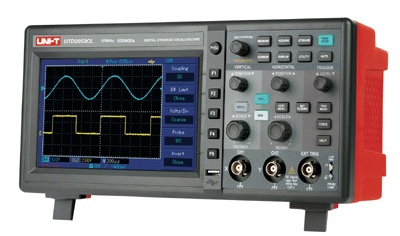
Working
If a current of I amperes passes through the loop which is situated in a magnetic field of flux density B, forces of BIL newtons act on each side of the kw. One causes the loop to move inwards and other outwards and thus loop starts vibrating if the current is alternating.
Recording a waveform
A beam of light cast upon the mirror of one of these loops will be reflected. The reflected beam will move backwards and forwards in a horizontal plan (assuming the loops to be in a vertical position). For recording the wave shape, the photographic film is passed at a constant speed in a direction perpendicular to that of the movement of the reflected beam of light. The result of these two perpendicular motions gives the wave shape required.
Observing a waveform
In order only to observe the wave shape, arrangement. The reflected beam of light from the vibrator mirror falls on a plane mirror and is reflected from thence upon a screen. A cam, driven by a small synchronous motor, which is supplied from the source whose waveform is required, is responsible for rocking this mirror in forward direction for 11/2 cycle. Then mirror is returned by cam to its initial position during the next half cycle. During this half cycle the light is cut off by a rotating shutter attached to the motor shaft. Persistence of vision gives the effect of continuously existing wave (172 cycle long) on the screen.
Electrostatic Oscillograph
This is basically an electrometer of special design. It is best suited to low-frequency high voltage work (above 2000 volts). It consumes no energy and requires a very small current. It is not commonly used now-a-days due to the development of cathode ray oscillograph.
Cathode Ray Oscillograph
The cathode ray oscillographs have no moving metallic conductors like electromagnetic and electrostatic oscillographs. Instead these oscillographs have a beam of electrons, which itself represent a current. This beam of electrons is deflected by an electrostatic or electromagnetic field. The inertia of beam is very considerably less than that of a metallic conductor. As a result CRO can be used at frequencies much above the highest which can be observed on the Duddell oscillograph.

